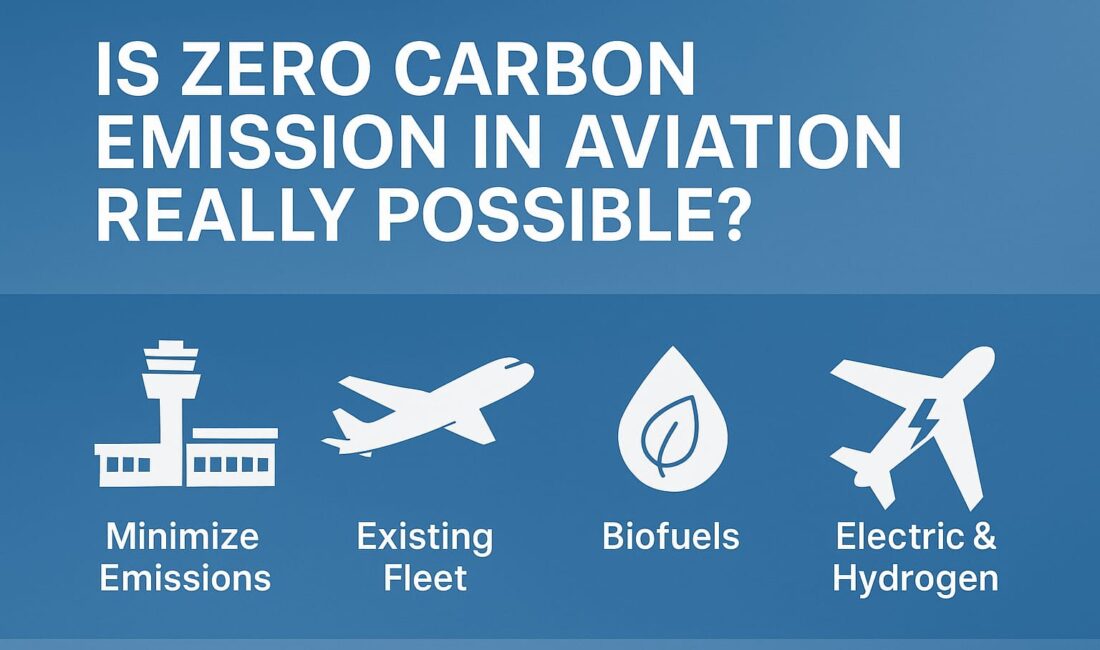At a recent conference I attended, we were discussing sustainability in aviation. Airports and airlines are indeed taking serious measures on this front. The goal is to minimize carbon emissions.
One participant asked: “Is a completely zero carbon emission possible?” Perhaps at some point in the future, but in the short term, this is difficult. Thousands of aircraft currently flying still run on fossil fuels. Biofuels help reduce emissions but do not eliminate them entirely. True zero emissions can only be achieved with electric or hydrogen-powered aircraft.
Based on this discussion, let’s take a closer look at how feasible zero emissions in aviation are today and in the future:
The Goal: Minimizing Emissions
Both airports and airlines are making major investments to reduce carbon output. Organizations like the International Civil Aviation Organization (ICAO) and the European Commission have set net-zero emission targets for 2050. The aim, if not to eliminate emissions completely, is at least to minimize them.
Short-Term Reality: Why It’s Difficult
Achieving full zero emissions under current conditions is not realistic in the near term:
-
Thousands of aircraft in service today run on fossil fuels.
-
Aircraft have a service life of 20–30 years, making rapid replacement economically unfeasible.
-
Sustainable Aviation Fuels (SAF), while promising, still generate some emissions.
Biofuels: A Transitional but Limited Solution
-
SAF can reduce emissions by up to 60–70%.
-
But it’s not sufficient to achieve full zero emissions.
-
Global production capacity remains limited, and costs are still high.
Long-Term Solutions: Electric and Hydrogen
Reaching true zero emissions in aviation is possible only with next-generation technologies:
Electric Aircraft
-
Suitable for short distances.
-
Current battery technology is not yet adequate for large passenger aircraft.
Hydrogen-Powered Aircraft
-
Theoretically capable of zero emissions.
-
But transporting, storing, and building ground infrastructure for hydrogen requires a massive transformation.
The Role of Airports
Sustainability is not just about aircraft. Airports are also taking key steps to reduce their carbon footprint:
-
Transition to renewable energy (solar panels, wind turbines)
-
Use of electric ground vehicles (pushback tractors, baggage carriers)
-
Carbon offset programs and green building certifications
-
Energy efficiency and waste management systems
Conclusion: Reduction for Now, Elimination in the Future
Given today’s realities, the short-term goal is emission reduction, while the long-term goal is elimination. The journey to sustainable aviation will take time, but the steps being taken are encouraging.
“Carbon-zero flights may well be part of the future. But this won’t happen overnight; it will be a step-by-step transformation.”



